Read Reviews
The Best Ant Killers
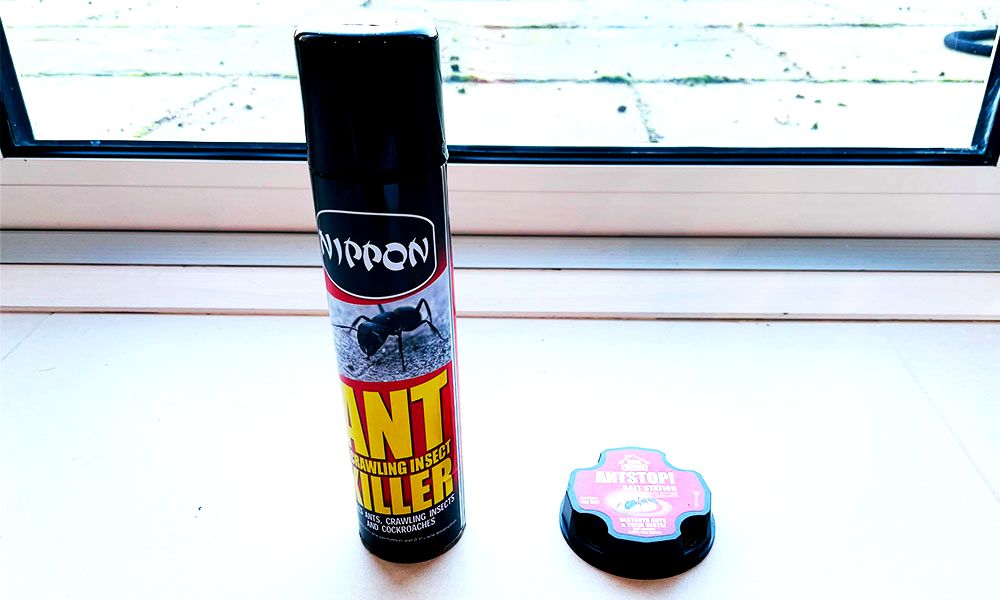
-
Best indoor ant killer - Home Defence Ant Stop! Bait Station
-
Best high strength ant killer - Nippon Ant Killer Powder
-
Best ant killer for lawns - Buysmart Ant Gone Watering Can
-
Best outdoor ant killer - Home Defence Ant Stop Granules
Ant Killer Reviews
1. Home Defence Ant Stop! Bait Station[ SAVE 53% ]
Best indoor ant killer
- Can be used both indoors and outdoors.
- Gets to work quickly - customers report seeing dramatic results in around 3 days.
- Good value for money - each trap lasts around 3 months.
- These provide a mess-free approach to dealing with ants.
- No chance of cross-contamination as the traps are self contained and the poison stays inside.
- Not a very attractive unit if you can't hide it out of sight.
- There is the potential for the unit to be picked up by kids and pets if found.
- Effectiveness is dependent on ants' willingness to enter the trap.
- Clips on station can be hard to break off, you may need to use pliers.
- Protection
- 3 Months
- Usage
- Indoors & Outdoors
- Type
- Bait Station
- Effectiveness
- 4.5
- Application Ease
- 4.7
- Longevity
- 4.3
- Ingredient Safety
- 4.8
Dealing with an ant infestation can sometimes feel like an uphill battle. A several-pronged approach is often required to really battle effectively against those insistant armies.
I used the Home Defence Ant Stop! Bait Station in my kitchen, positioning two bait stations at two different entry/exit points that I’d seen ants use.
These stations attract ants, enticing them with bait, and then transfer an ant-killer product onto them. The worker ants take this to the nest and it slowly kills the entire colony.
These Home Defence traps are pretty handy because they provide an ant-eradicating solution that you can a) tuck away out of sight, and b) put down and forget about. They save the mess and bother of accidentally treading powder around the home, and will continue working for up to three months.
If you’re generally reluctant to put down powders or liquid baits, these self-contained units are probably the best ant killers to use. The entry hole in the bait station is only small enough for insects to crawl inside, making these units pretty safe to use around the home. However, if you do have kids and pets you will need to make sure they don’t pick up or chew them.
Did you find this review helpful?
2. Nippon Ant Killer Powder
Best high strength ant killer
- Extremely effective at killing ants and can be used both indoors and outdoors.
- When ants touch the powder it sticks to them, so they take it back to the whole colony.
- Does a good job of stopping ants from returning.
- Can destroy entire colony in between 7 - 10 days.
- Can also kill wasps if squeezed into their nest.
- Only effective if ants come into contact with powder - need to be smart about placement.
- Rain can wash powder away, in which case another application will likely be required.
- It can be difficult to get accurate application in small spaces.
- Highly toxic to aquatic life and needs to be used and disposed of with care.
- Protection
- 6 Months
- Usage
- Indoors & Outdoors
- Type
- Powder
- Effectiveness
- 4.4
- Application Ease
- 4.5
- Longevity
- 4.7
- Ingredient Safety
- 4
Nippon Ant Killer Powder is one of the most well-known products for killing ants both inside the home and out.
As well as being highly effective against ants, Nippon ant powder can be used for many types of pest control. It’s also capable of getting rid of other crawling insects such as earwigs, woodlice and silverfish. If you’re dealing with some form of insect infestation, likelihood is Nippon can be of service.
Unlike some other ant killers, Nippon states that children and pets don’t have to be kept away from the treated area, which is good news if you were concerned about either. However, as with all chemicals, it’s still best to keep curious hands and paws at a safe distance – just in case.
This powdered insecticide is very easy to use, coming in a bottle with small holes in the top – simply shake it out like talcum powder. It can be dusted along doorframes and windowsills, and any other crevices through which ants are gaining access to your home.
The bottle design can make it challenging to accurately get the powder into smaller spaces, but only a small amount needs to be applied successfully to help it be effective.
It gets to work quickly, and the effects can sometimes be noticed after just a few hours. It can take a couple of days to get rid of the ants completely, but the results are long lasting; you’re unlikely to have any problems with ants for several months after use.
Overall, this is an extremely effective product which will essentially eradicate ants, wherever you place it; however, it should be noted that one of Nippon’s active ingredients is permethrin. This is a harsh chemical that can be very harmful to aquatic life. Care needs to be taken when disposing of Nippon, and it should be avoided if water from your garden runs off into a stream or river.
Did you find this review helpful?
3. Buysmart Ant Gone Watering Can
Best ant killer for lawns
- The watering-can design of the bottle makes it easy to distribute product in the garden.
- Does not damage grass.
- Creates the possibility to pour directly into the ants' nest.
- Liquid form makes it easier to apply to a larger area than a powdered product.
- Comes pre-mixed and does not require decanting as with some other liquid products.
- Best suited to outdoor use only - very messy and can't easily be used against inside ants like some other products.
- Isn't very effective once dry - ideally needs to be applied directly into nest.
- Has quite a strong smell and should be used in well-ventilated exterior.
- Does not always successfully infiltrate the nest and get to the core.
- Re-application may be required to keep ants at bay.
- Protection
- 3 Months
- Usage
- Outdoors
- Type
- Formula
- Effectiveness
- 4.2
- Application Ease
- 4.3
- Longevity
- 4.3
- Ingredient Safety
- 4.2
This Buysmart Ant Gone comes ready to use in its own ant-attacking watering can. It contains 5 L of liquid product and is effective against ants and other crawling insects. According to Buysmart, it can even be used against ticks, fleas, mites and mosquitos.
The design makes it easy to apply, taking the hassle out of using at-home treatments to fix an ant problem. It’s a good liquid alternative to using bait stations and granular bait without having to use an aerosol ant killer spray.
Whereas some other products require decanting and diluting, Ant Gone only requires you to open the bottle and pour it straight over the ant nest. You can also use it on paths and patios when you can’t get to the nests.
Whilst Ant Gone can is technically suitable for indoor and outdoor use, you’d have to think carefully about how to apply it inside if you didn’t want to drench your house (given that it’s a liquid).
However, the fact that it’s liquid does make it easier to apply over larger surfaces than powder products. With a rose-head that helps distribute the product evenly and sparingly, it can be great for use over large patios and lawns.
Ant Gone relies on the product having physical contact with the ants and killing them that way; therefore, it can be harder to get it to infiltrate a nest. Pouring the liquid directly into the nest can be relatively effective, but may require a few applications.
Unlike some other products, particularly those in granule form, Buysmart Ant Gone isn’t carried back to the heart of the nest by the ants.
Did you find this review helpful?
4. Home Defence Ant Stop Granules
Best outdoor ant killer
- Successfully infiltrates the heart of the nest: sugar-based 'carrier' attracts ants, and then they carry the insecticide back to their nest.
- You don't need to know exactly where the nest is, only where the ants patrol.
- Can also be diluted and poured as a liquid directly into nest.
- Less messy than sprinkling powder and less time consuming than spreading liquid.
- Will not work against red ants.
- Ants may not always pick up the 'sugar' to take back to the nest - slightly depends on the ants!
- Can only be used outdoors.
- Pets and children should be kept away from the treated area.
- Protection
- 1 Month
- Usage
- Outdoors
- Type
- Granules
- Effectiveness
- 4.5
- Application Ease
- 4.5
- Longevity
- 4
- Ingredient Safety
- 3.8
The Home Defence Ant Stop Granules are for outdoor use only, and can help with getting rid of ants on patios or lawns.
The product is in granular form, combined with a sugar-based carrier which attracts ants. The granules come in a cardboard canister with a plastic lid and can be applied straight from the packet.
The instructions advise piling the granules up near to the nest site where ants live, or mixing the granules with water and pouring the solution into the nest to kill the whole colony.
In my case, I wasn’t sure where the nest was; however, there were a few places where the ant activity was more prolific, so I just poured a little pile of the granules in each of these places.
The idea is that they take the granules back home to the nest and this kills the entire colony.
Again, the day after I applied this product there were actually more ants on the patio, likely attracted to the sugary sweet bait. However, after three days we had gone from hundreds of ants on the patio to just a few. By the end of the week, there were no ants at all. This was a few weeks ago and there have been no signs of any ants returning. It is also a large pack, and I didn’t use anywhere near all of it so there is plenty more, for several future applications, if the ants do come back.
In my opinion, the combination of using this product outdoors and the bait stations indoors worked a treat. It offered effective ant control and is what I’d recommend if you’re experiencing a similar infestation to what I had.
Did you find this review helpful?
Compare Product Features
Use the dropdown to sort the table by the feature you want to see.
Home Defence Ant Stop! Bait Station
- 4.6
- 3 Months
- Indoors & Outdoors
- Bait Station
Nippon Ant Killer Powder
- 4.4
- 6 Months
- Indoors & Outdoors
- Powder
Buysmart Ant Gone Watering Can
- 4.3
- 3 Months
- Outdoors
- Formula
Home Defence Ant Stop Granules
- 4.2
- 1 Month
- Outdoors
- Granules
How to Choose The Best Ant Killer
While having ants in your garden isn’t too much of an issue at first, they can eventually invade your house – and they don’t tend to travel in groups of just one or two!
The following tips will help you find the best ant killer to combat ant infestations around your property:
The Different Types of Ant Killer
Your first decision is whether to use a spray, bait station, powder or gel. Each type has its advantages and disadvantages.
Spray
An ant killer spray will kill ants on contact.
While this is very easy to use and delivers fast results, the downside is that sprays have no effect on the ants that aren’t directly treated. As a result, this approach offers relatively limited pest control. It’s unlikely to kill all ants or get rid of the entire colony.
Ant killer sprays usually contain Borax, a chemical which is considered safe for use around humans as long as the instructions are followed carefully.
Ant Bait Traps
Ant bait offers slow but effective pest control. Bait stations are filled with poisonous ant bait (usually disguised amongst high-sugar substances).
Drawn in by the ant bait, ants visit the trap and eat the poison. Within a few days, the poison will kill ants that ate the ant bait. Ants who came into contact with the poisoned ants will also die. Traps like this are useful for killing an entire colony, not just a few ants. They can even kill the queen.
For the most part, using ant bait in this way is quite safe. The plastic bait traps are small and enclosed. You just need to make sure the kids and pets don’t pick them up or chew them.
Powders and Gels
These work the same was as baited stations, but you’ll have more flexibility in terms of where to place the poison.
This is good news for hard to reach areas.
Gel can be squeezed into small cracks and crevices, so is easy to apply wherever you see ants. The gel sticks to the bodies of the ants, and they then take it back to their colony.
READ NEXT: How to Get Rid of Ants From Your Garden Naturally
Indoor Vs. Outdoor Ant Killers
Many ant killers can be used both indoors and outdoors. However, this depends on the ingredients they contain.
Stronger ant killers may be more effective, but not safe for inside use. Check the manufacturer’s instructions to see if a product is intended for indoor or outdoor use.
If you have pets and kids, look for a product that states it is safe to be used around them.
You may decide that certain products are more suitable for use indoors or out – for example, bait traps are a lot less messy than spreading powder through the home.
When to Apply Ant Killer
This depends on the type of product, but generally ant killer is best applied outdoors when the grass or patio is dry. You should check for signs of infestation every 30 days to give the product time to work, and reapply when needed.
Bait traps and gels normally state how long they remain effective for. They can be put down at any time and often continue working for three months. Check the manufacturer’s instructions to be sure when to switch to new ones.
READ NEXT: How to Get Rid of Ants From Raised Beds
Recognising Different UK Ant Species
Though the products on this page will work against any species of ant found in the UK, it may be worth knowing a bit more about the creatures you’re up against.
Common Garden Ants
These black ants are the most common to find in the garden. If you have found indoor ants, they are most likely to be these.
Common garden ants don’t have stingers and don’t bite. They are very fond of sweet substances, so using sugary ant bait is likely to lure them in.
Carpenter Ants
The carpenter ant is much larger other ants like the common garden species. They can be around 0.5 cm long. If threatened, they can bite.
Carpenter ants are most often found in forests, on logs and fallen trees. They tend to build their nests in these pieces of wood, excavating tunnels to live in.
Although not so commonly found in the home, one of the main problems with a carpenter ant invasion is they can be quite hard to get rid of.
Finding the nest, and treating it directly, is the most effective way to cause problems caused by carpenter ants.
Following ant trails can be a good way to find the nest. It may take patience, but watching where the ant trails return to, once they’ve got food, will reveal the nest site.
Fire Ants (Red Ants)
Perhaps the most despised of the ant species in the UK is the fire ant. Red fire ants are distinctive to look at, and known to sting.
Their sting can cause irritation for a few hours, up to a few days.
Fire ants are quite common to find on garden lawns. They nest in small colonies (around 100 – 300 ants) in the soil.
Although the colonies are small, there can be several queens in each colony that are capable of laying eggs so numbers can grow fast.
Using ant bait, as well as directly targeting the nest (identifiable by a soil mound) is the best ant killer method to help control an infestation of fire ants.
READ NEXT: Facts About Ants
Combatting Other Types of Insects
Ant killers are not only capable of tackling ant infestations, they can also be used to keep control of other pests.
Buying a product which is versatile can save you money in the long run, in case you have problems with more than one type of insect.
It’s always recommended to read the manufacturer’s instructions first, to be sure exactly what your product is capable of and how it should be used, but these are some other insects that can be kept at bay by ant killers:
- Fleas
- Cockroaches
- Earwigs
- Bedbugs
- Woodlice
Ant Killer FAQs
Ants usually come inside because they are attracted by food. They may be less likely to come in if there is no source of food, especially sugary foods, available to them.
Keep all food-stuff in airtight containers or in bags sealed with secure clips or ties. Rinse out containers before putting them in recycling bins, and wipe and dry kitchen surfaces after preparing food. You might want to keep sugary foods and drinks such as squash and jam in the fridge.
You can also spray a lemon or vinegar solution around the areas where you see ants. This will at least temporarily disrupt them.
To ensure your home remains free of ants you can use granule, powder, or spray ant killers at the points where ants are gaining access to your home.
Ants are not very harmful of pests; however, species like ‘red ants’ may bite occasionally. They can also cause damage to plants and lawns.
If you only have a small infestation of ants you could try using a vinegar or lemon solution to get rid of them. However, as a single queen ant can spawn thousands of eggs every day, and ant mounds can contain up to 200,000 ants. The only way to truly be rid of them is to wipe out the colony with a product specifically designed for this purpose.
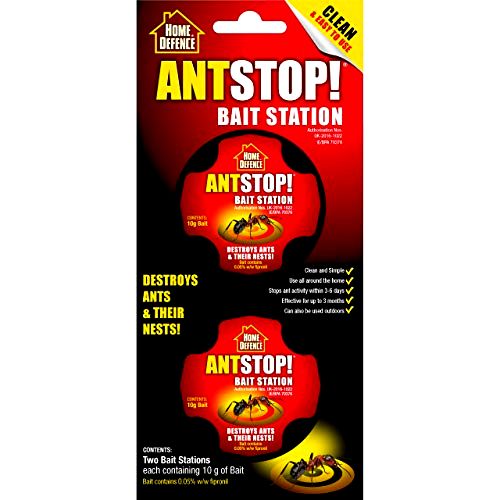
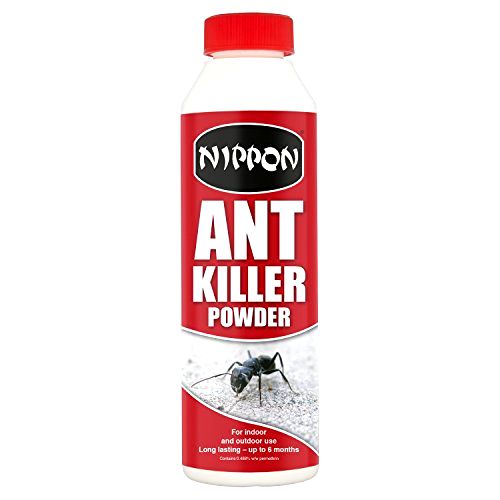
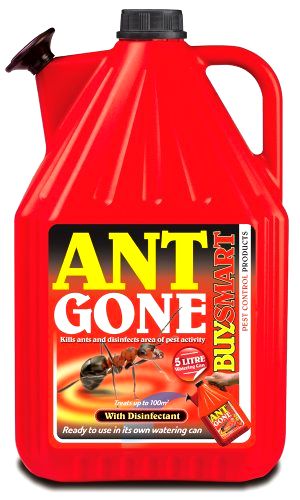
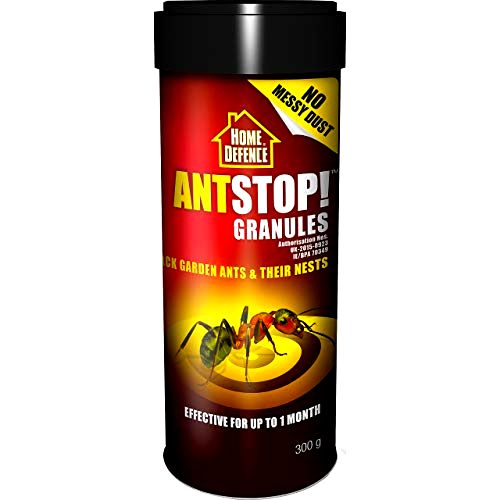

Share